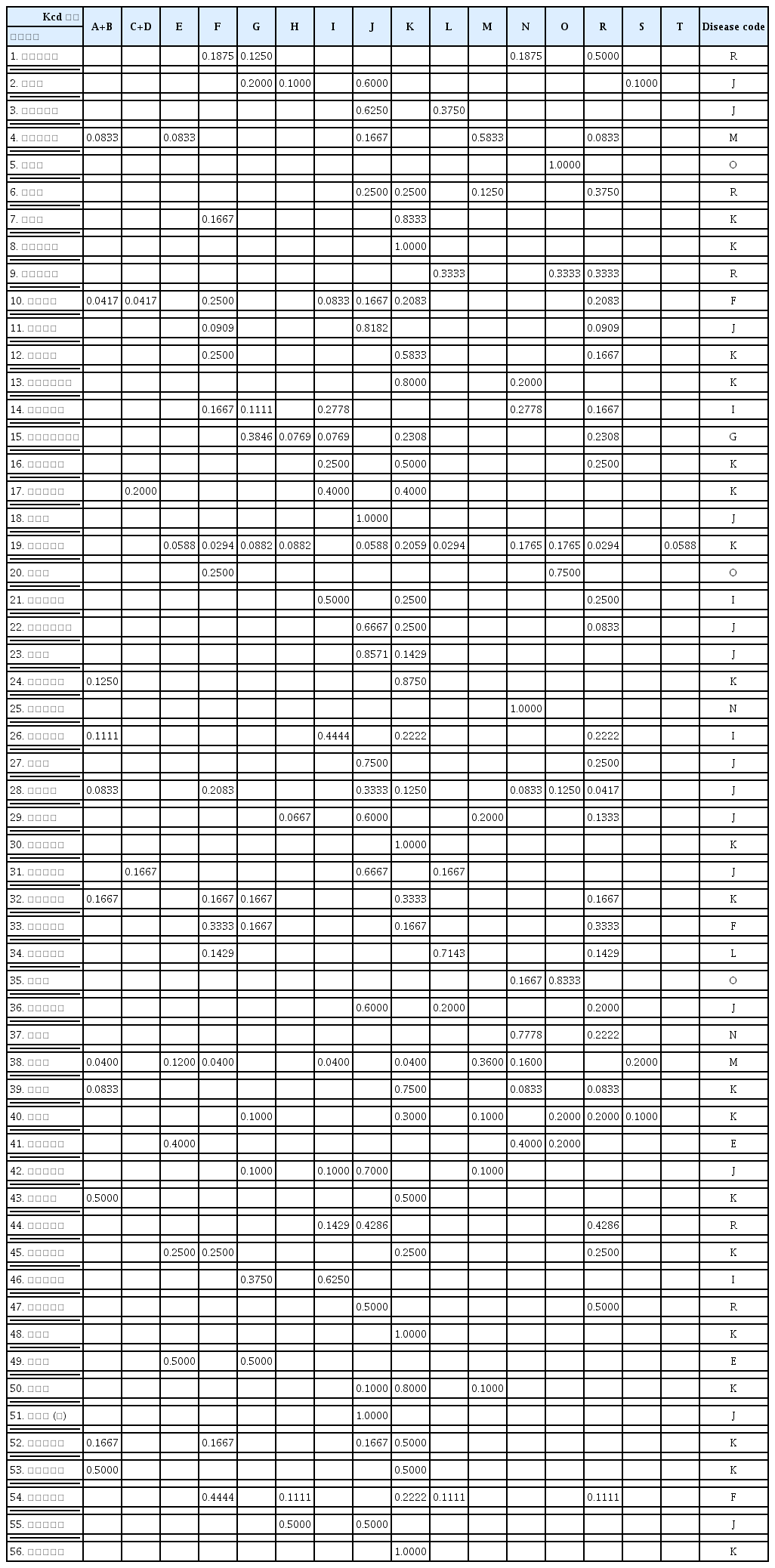Study on the distribution in major disease category and frequency of clinical usage of national health insurance herbal prescription based on analysis on KCD8 disease code of indications
Article information
Abstract
Objectives
National health insurance herbal prescription of Korean medicine has been serving important role in public healthcare in spite of continuous demand on revision of system. However, the categories of insurance herbal prescriptions are not equally distributed throughout the KCD-based major disease categories. We analyzed statistical database of claimed national health insurance classified as major disease categories by years. We classified all 56 herbal prescriptions as per their total medical indications into 22 major disease categories to analyze their distribution. Significant increase of M and S-T code claims were found, whereas decrease of U code claims by years. We figured out that the 56 prescriptions were unequally distributed along with enrichment of certain codes such as K and J. Meanwhile, the insurance claim of each prescription was positively correlated with number of code types of their indications. As a result, we believe that the reform of national health insurance herbal prescription list is necessary to promote use of it in clinic.

The trends of number of patients in all types of Korean medicine clinic classified as 22 major disease categories by years (2010–2020).
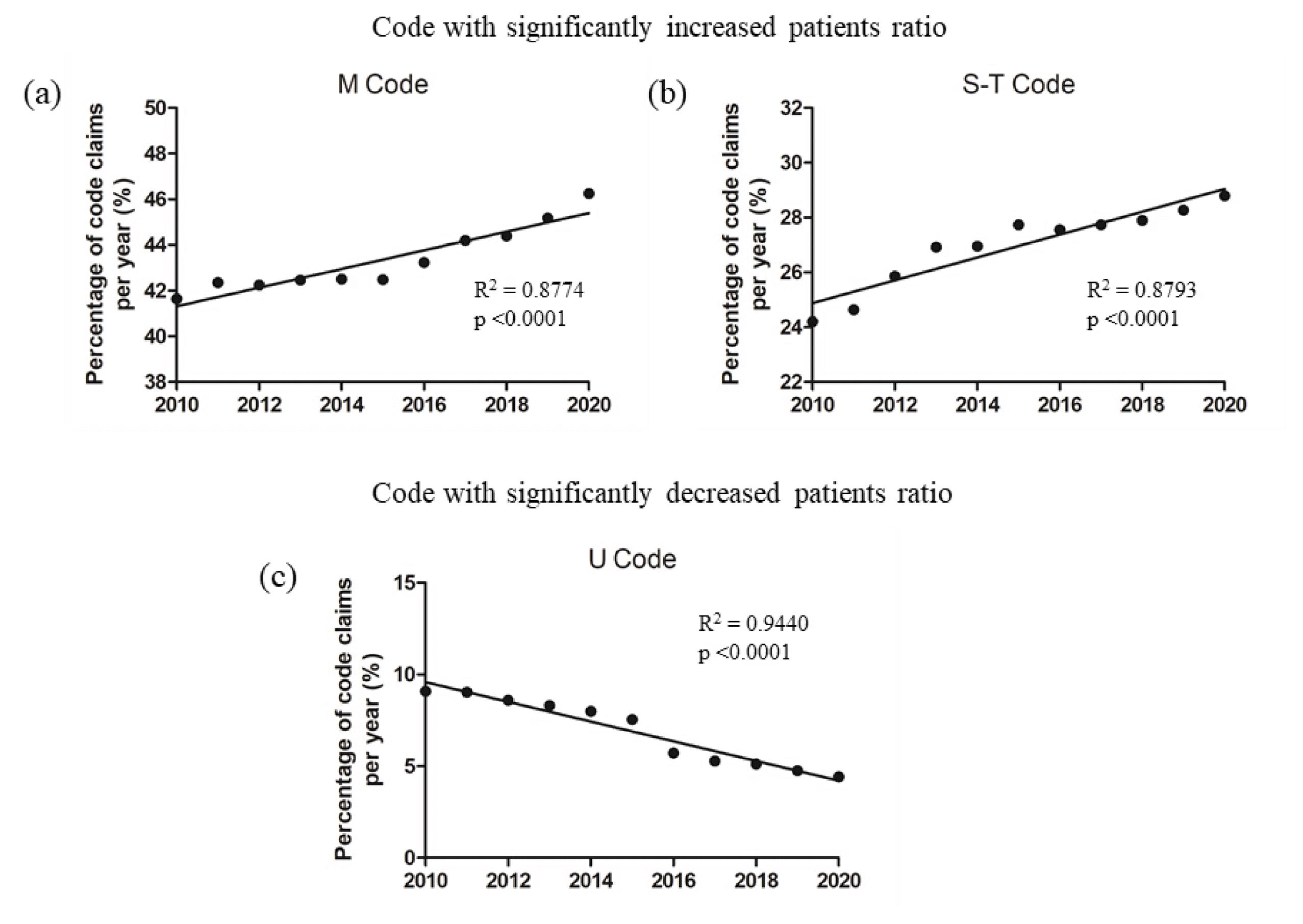
The simple linear regression analysis showing the trends of number of patients by major disease codes that shown significant changes in ratio by years (2010–2020). (a) Codes that the ratio of patients has been increased (b) Codes that the ratio of patients has been decreased.

Distribution analysis over 22 major disease categories of all indications from 56 national health insurance herbal prescriptions. (a) Includes counts of duplicate indications. (b) Excludes counts of duplicate indications.
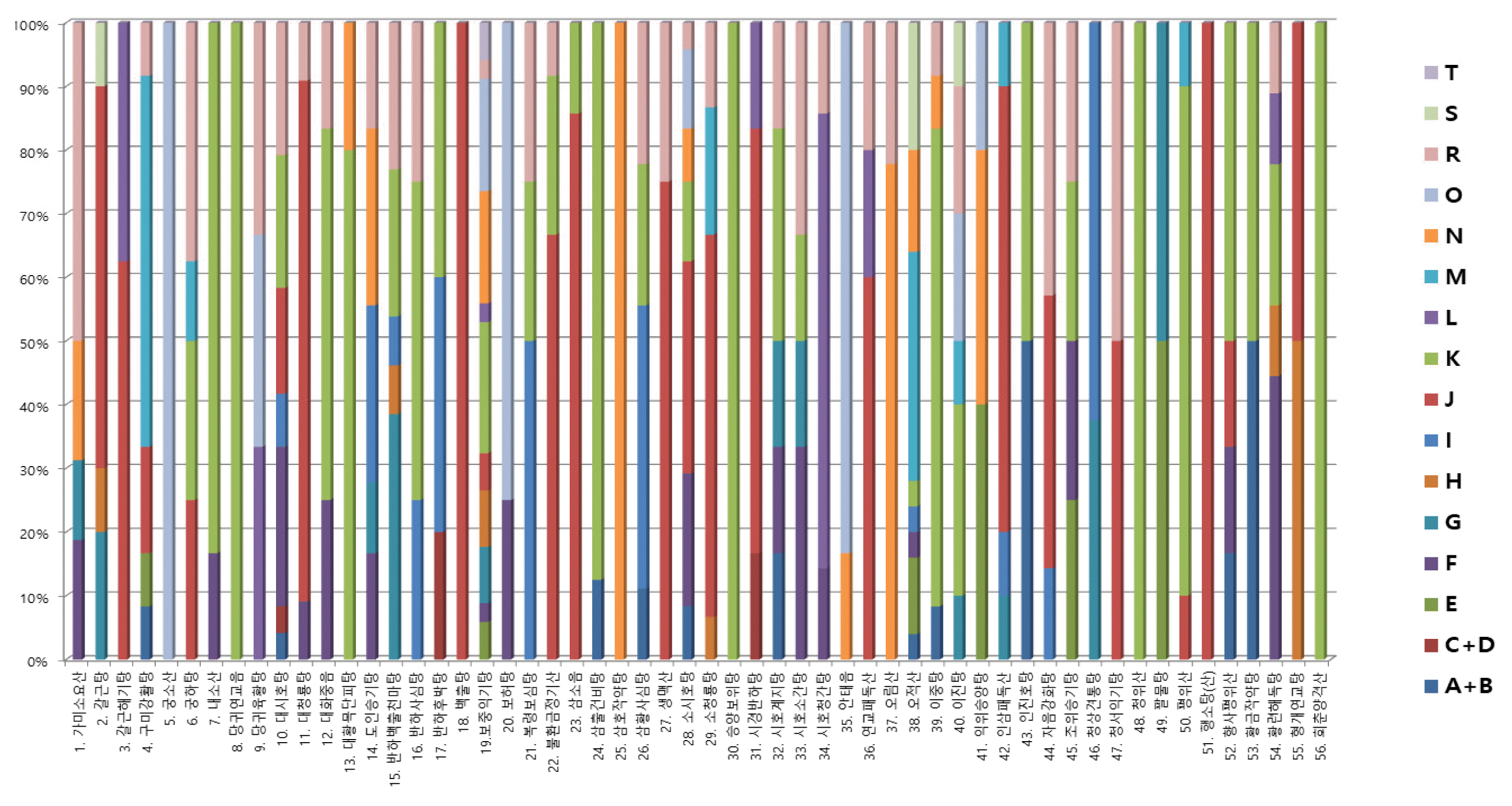
Distribution ratio analysis over consisting indications of 22 major disease categories from each of 56 national health insurance herbal prescriptions.
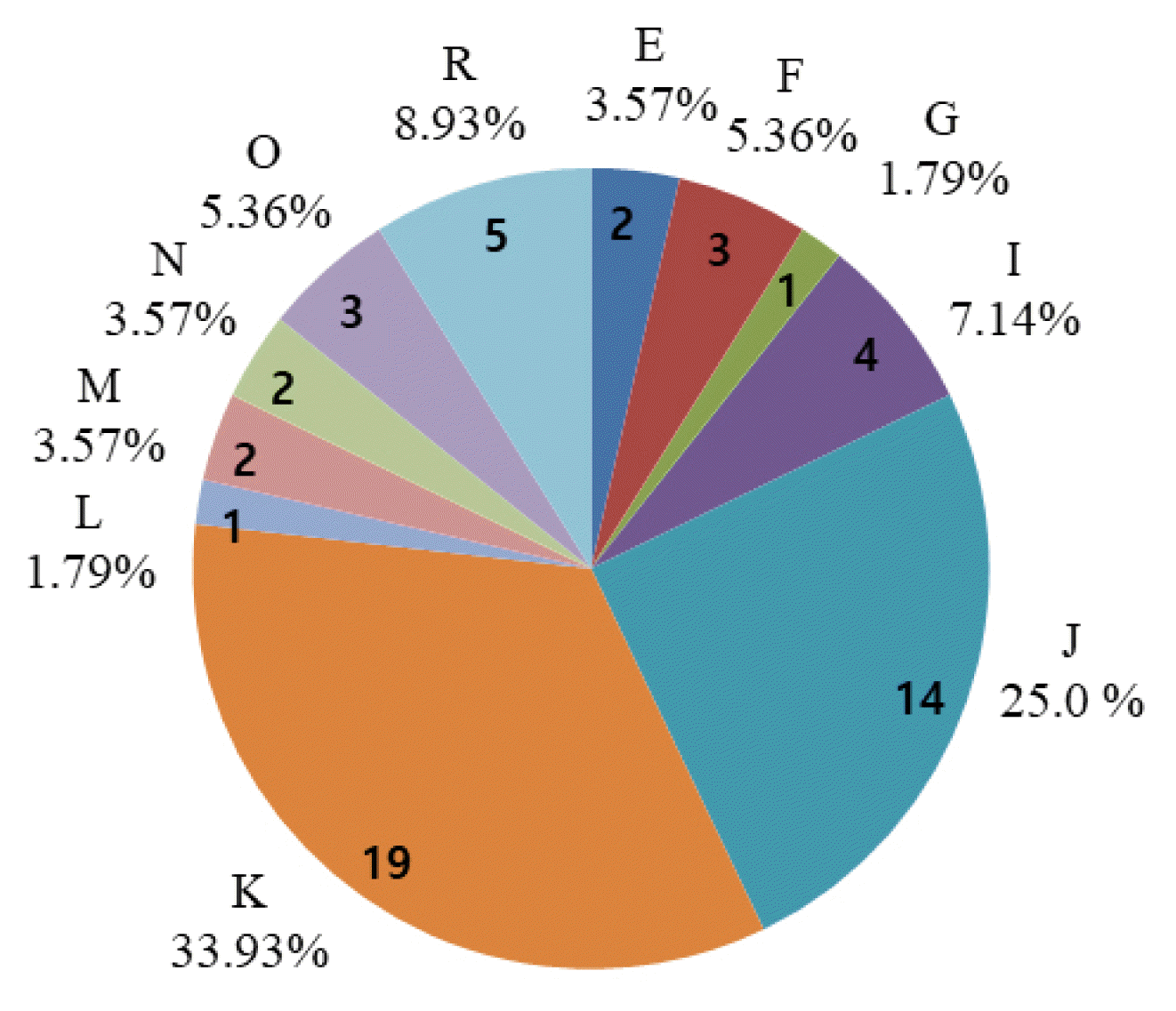
Distribution of major disease code given to national health insurance herbal prescriptions based on their disease codes of all indications.
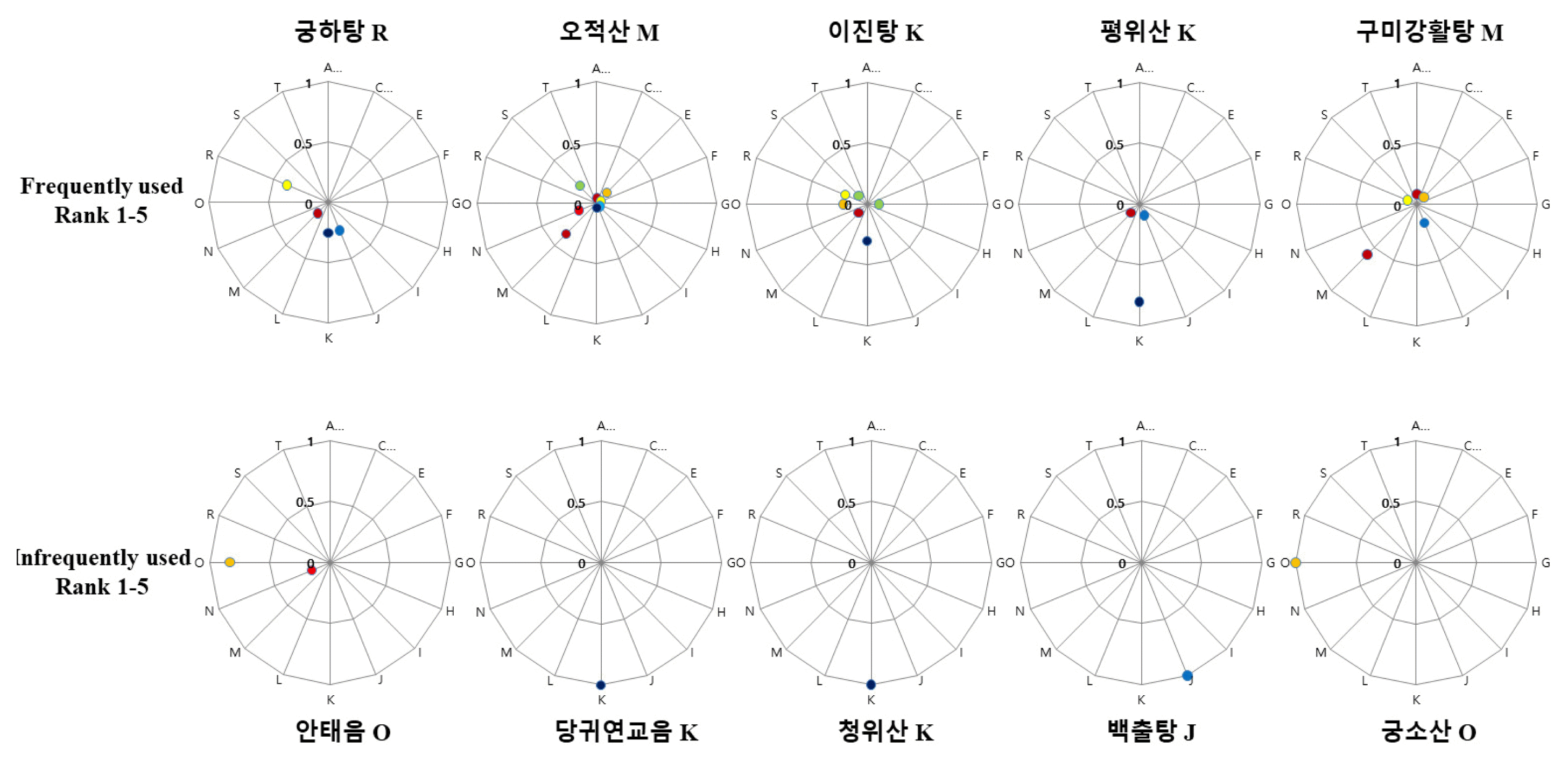
Web chart analysis of major disease code of all indications from frequently used or infrequently used herbal prescriptions (ranks from 1 to 5).
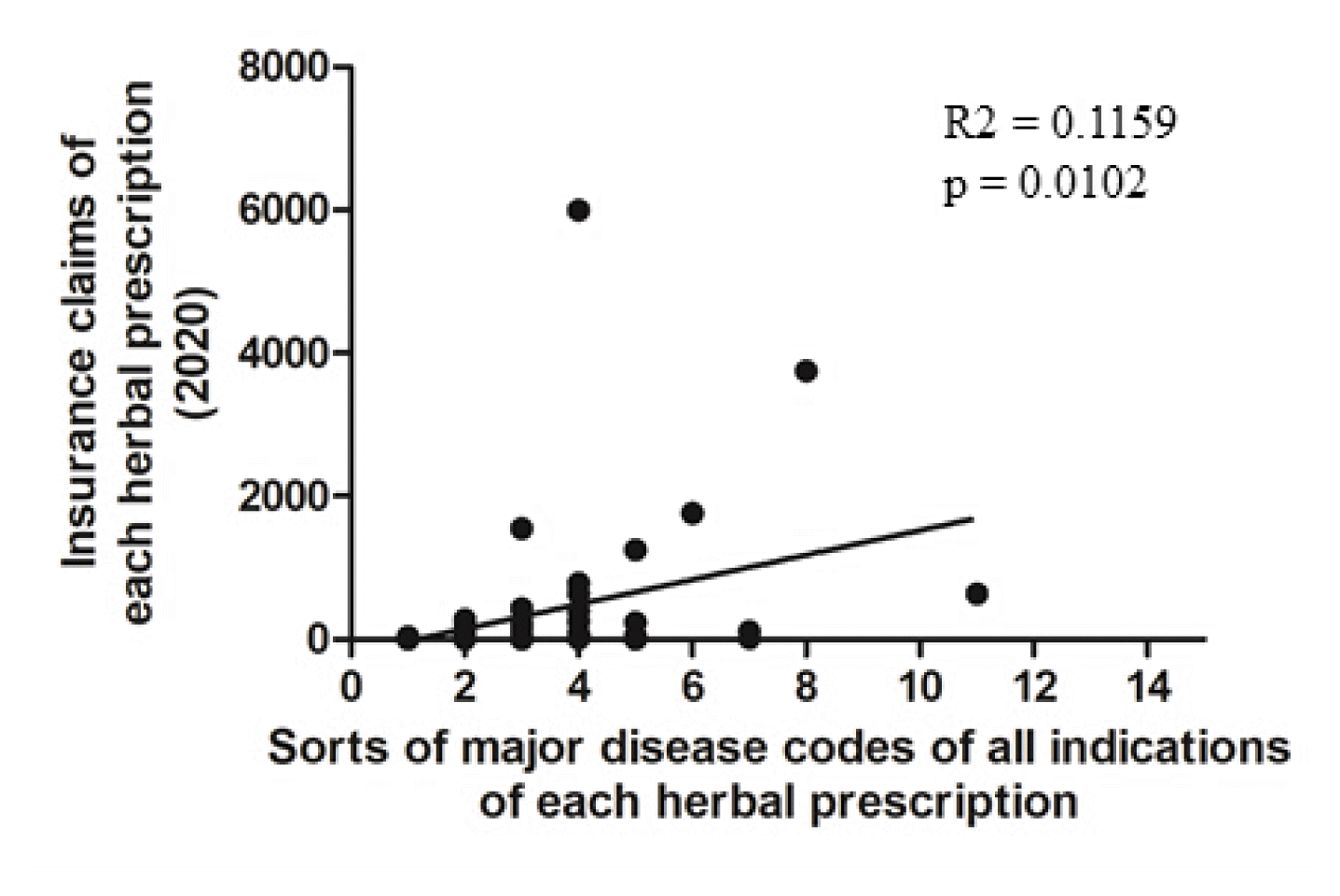
The simple linear regression analysis showing the correlation between the sorts of major disease code of all indications from herbal prescription and number of insurance claims of each herbal prescription.
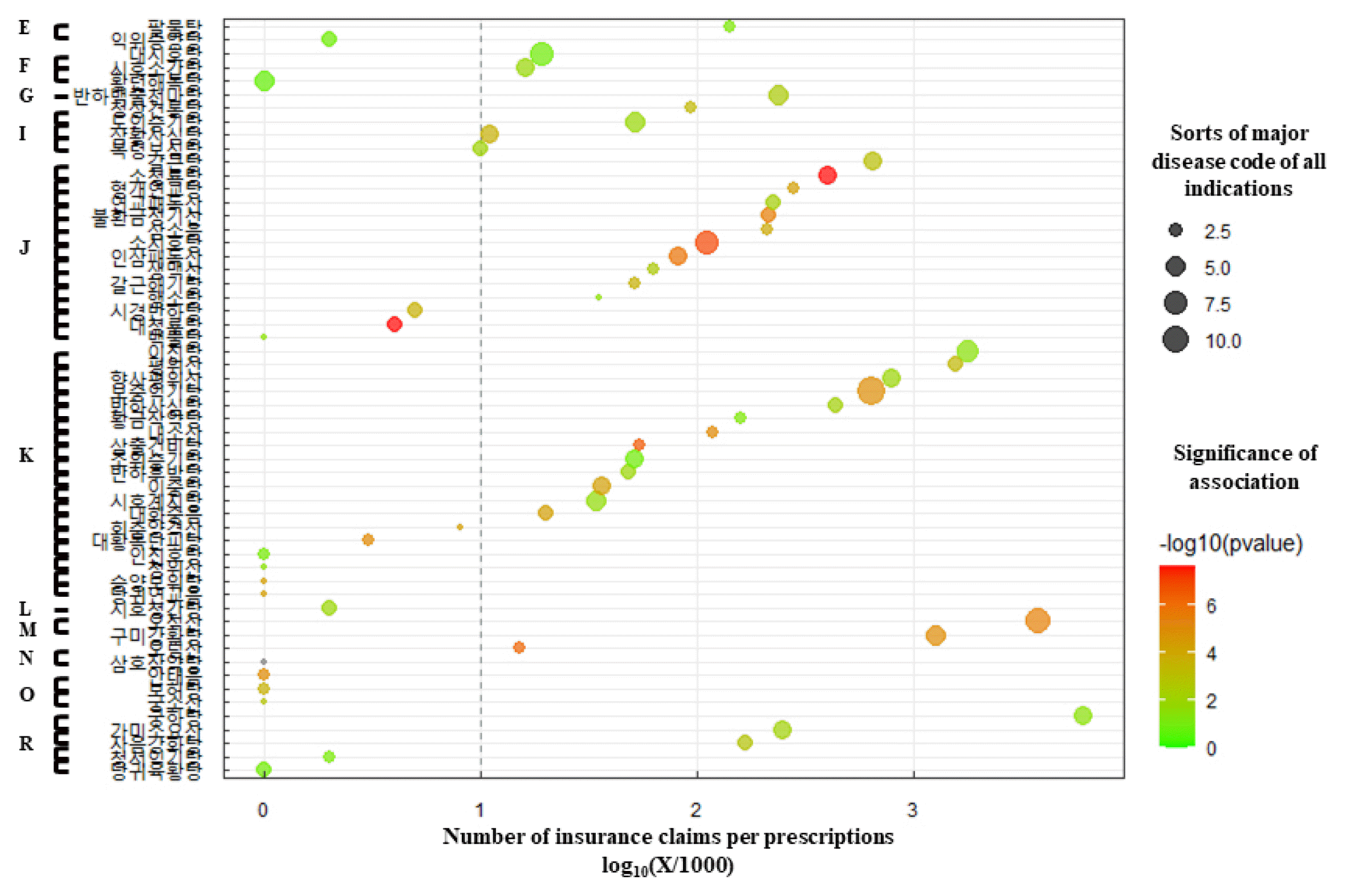
Bubble plot presenting the sorts of major disease code of all indications, number of insurance claims, and fisher’s exact test result of indications from 56 herbal prescriptions.

The Number of Patients in All Types of Korean Medicine Clinic Classified as 22 Major Disease Categories by Years (2010–2020)
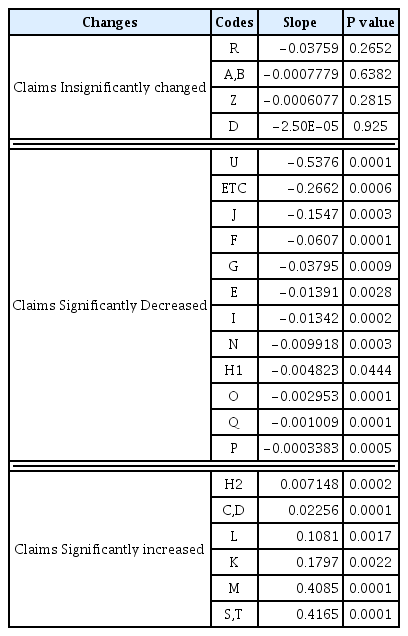
The Analysis of Proportion Changes in Number of Patients in All Types of Korean Medicine Clinic Classified as 22 Major Disease Categories During 2010–2020.

